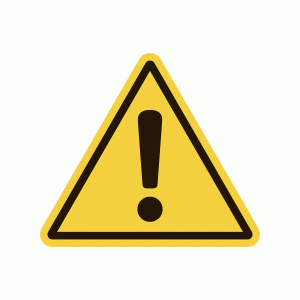
A majority of California voters in 1986 approved a ballot initiative known as Proposition 65, officially titled California’s Safe Drinking Water and Toxic Enforcement Act of 1986 (“Prop. 65”). Prop. 65 seeks to protect California’s drinking water sources from being contaminated with chemicals known to the State of California to cause cancer, birth defects or other reproductive harm and seeks to require businesses to warn when they knowingly and intentionally cause significant exposures to listed chemicals known to cause such harm. In general terms, Prop. 65 requires businesses, manufacturers and certain others (such as employers) to inform Californians about exposures to such chemicals. This is done through warning signs and warning labels. The purpose of this blog post is to provide an overview of Prop. 65 for companies who do business in California and to highlight some major changes to Prop. 65 which take affect later this year.
The scope of Prop. 65 in California cannot be overstated. Warning signs and labels are found in many types of businesses in California from bakeries to amusement parks to grocery stores. You may also see Prop. 65 warnings on apartment buildings and commercial buildings. Products themselves also carry warnings. Common examples include leaded glass crystal, garden hoses and shovels, electrical cords, and ceramics (just to name a few).
Prop. 65 can be enforced not only by the State of California, but also by private individuals and groups acting in the public interest. Private enforcement is an entire business and industry with law firms solely dedicated to these types of cases. Enforcers are able to recoup a portion of the penalties paid through settlement of these claims and recoup their attorney fees as well.
The enforcement process begins when a Prop. 65 60-Day Notice is sent to the alleged violator. This letter is also sent to the California Attorney General’s Office. During this 60-day period, the Attorney General can decide if it wants to prosecute an action. If the Attorney General does not take action, the private enforcer may file suit at the end of the 60-day period. These notices are published on the Attorney General’s website.
In terms of trying to avoid a Prop. 65 Notice in the first place, the first step is to determine if you are conducting any sort of business in California, which exposes persons in California to a chemical known to California to cause cancer, birth defects, or reproductive harm. These chemicals are listed with the California Office of Environmental Health Hazard Assessment, known as OEHHA. Currently there are about 1000 chemicals on OEHHA’s list.
Generally speaking, a non-governmental business with ten employees or more must provide a warning for products containing one or more of the chemicals listed by the OEHHA unless: (1) the business can demonstrate that exposure to the chemical poses “no significant risk level” of cancer, or “no observable effect level” of birth defects or reproductive harm; (2) the exposure is one for which federal law governs warning in a manner that preempts state authority; or (3) the exposure takes place less than 12 months subsequent to the listing of the chemical in question on the list required to be published by OEHHA.
If no exception applies and the chemical exposure is above the “no significant risk level” or “no observable effect level,” Prop. 65 requires that the business provide a clear and reasonable warning. Although no specific language is required, Prop. 65 provides for a “safe harbor warning” where if the warning meets the safe harbor requirements, the warning is deemed to be clear and reasonable. Major changes to the safe harbor warning requirements have been enacted and take effect on August 30, 2018, though complying now with the new requirements is acceptable and will render you in compliance. Under the new warning scheme there are four key things to keep in mind.
One: the chemical must be named. Unlike before, the new warning regulations require that the warning provide at least one specific chemical to warn against. Where a warning is being provided for more than one endpoint (i.e., cancer and reproductive toxicity) the warning must include the name of one or more chemicals for each endpoint, unless the named chemical is listed as known to cause both cancer and reproductive toxicity and has been so identified in the warning.
Two: “Contained” v. “Cause” in the safe harbor warning. The old safe harbor warning sufficed if the warning stated the product “contains” chemicals known to the State of California to cause cancer or reproductive harm. The new safe harbor warning changes the language to warn consumers that the product “can expose” the consumer to the chemical(s).
Three: The warning must include a link to the State of California’s Prop. 65 website.
Four: The warning must include a triangular yellow warning symbol for non-food products. ⚠️
For example, a typical current Proposition 65 warning states, “WARNING: This product contains a chemical known to the State of California to cause cancer.” A sample new warning would look like this: “⚠️WARNING: This product can expose you to chemicals including arsenic, which is known to the State of California to cause cancer. For more information, go to www.P65Warnings.ca.gov.” See https://www.p65warnings.ca.gov/new-proposition-65-warnings
Anyone doing business in the State of California should consider if Prop. 65 applies to their activities. Cozen O’Connor will be conducting a webinar in Spring 2018 to provide a detailed overview of Prop. 65 and the labeling requirements taking effect this year. If you would like an invitation to the webinar, please email Lori Scheetz at lscheetz@cozen.com.

